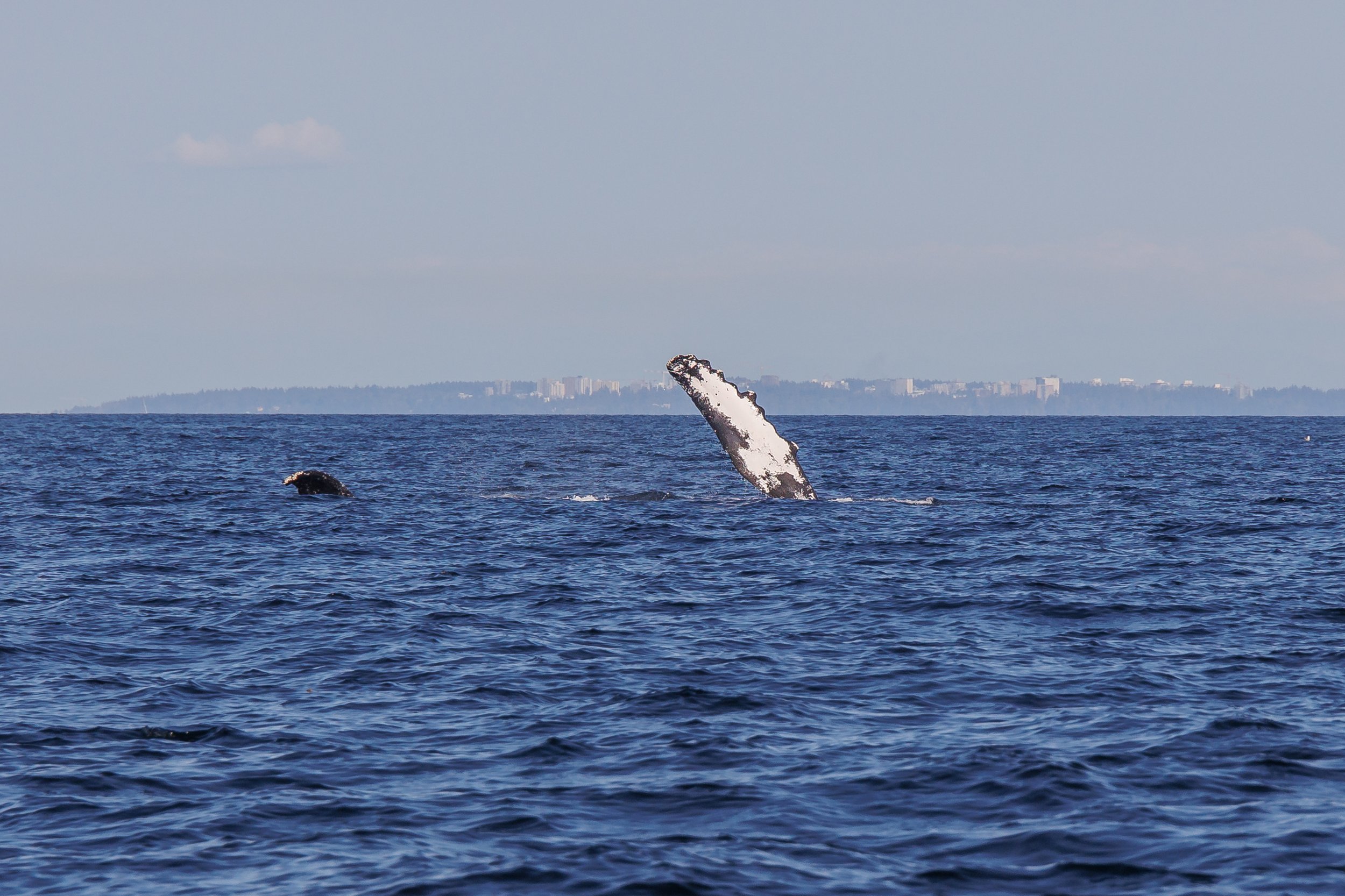July 30, 2023, 3:30 PM - Beak, Arial and Apollo off Halibut Bank
This afternoon we headed out from Nanaimo and went back into the Strait of Georgia to see what we can find for the afternoon! We searched out in the strait, heading towards a very popular humpback spot lately, Halibut Bank!
During this afternoon’s tour, we got the chance to see three different humpback whales! Spotted on this tour were:
Our humpback whales today were quite spread out. While none of them were associating with one another, all three whales we saw today were feeding in a similar area within the Strait of Georgia. This summer season, Halibut Bank has been the new hotspot for humpback whales feeding within the strait. Often we will end up seeing humpback whales feeding in similar areas during the summer for weeks at a time before moving on to a new feeding spot.
Both humpback whales and salmon feed on a lot of krill in our waters, specifically the Pacific Ocean krill species Euphausia Pacifica. Feeding on this much krill causes the flesh of salmon to appear pink/orange because they are able to metabolize the pigment astaxanthin, a carotenoid pigment that is found in krill. A very similar occurrence happens in humpback whales, though they are unable to metabolize carotenoid pigments, leading to some of the pink colour being expelled through the milk they produce for their young. Humpback whale milk also contains 50% fat, which is highly nutritious for their young while they make the long journey here to their feeding grounds from their warmer water breeding grounds.
Apollo the humpback whale is now thirteen years old and had her first calf in 2018. Apollo’s 2018 calf’s name is Nova. Apollo is a female we don’t get to see very often. She has generally been seen up off the coast of Campbell River, but we’re glad that we got a chance to see her recently joining our usual Halibut Bank humpback party.
Humpback whales are often seen returning with a calf to their feeding grounds every 2-3 years, but it is a very long and dangerous journey, sometimes taking up to 3 months to get back to the Salish Sea from their breeding grounds. On their way here, humpback mothers must protect their young from threats such as large vessels and marine mammal-eating orcas that are known to hunt young humpback and grey whales.
Photos on this afternoon’s tour were taken by Marine Naturalists Aly Kohlman and Vanessa Vereschahen.
Arial (BCY0767) fluking as he prepares for a dive. Photo by Aly Kohlman.
Apollo (BCY0172)’s beautiful flukes. Photo by Aly Kohlman.
Apollo (BCY0172) fluking. Photo by Aly Kohlman.
Apollo (BCY0172) - she appears to have some skin troubles (large bumps) going on right now. Photo by Vanessa Vereschahen.
Apollo (BCY0172) diving. Photo by Vanessa Vereschahen.
Apollo (BCY0172) fluking. Photo by Vanessa Vereschahen.
A big breach from one of our humpbacks with Vancouver in the background. Photo by Vanessa Vereschahen.
One of our humpbacks pec waving in front of Vancouver. Photo by Vanessa Vereschahen.
Arial (BCY0767) fluking in the distance. Photo by Vanessa Vereschahen.
A humpback fluking with Vancouver Island in the background. Photo by Vanessa Vereschahen.
Our sea lions were busy resting on the ODAS buoy this tour. Photo by Aly Kohlman.
Loafing/napping together! Photo by Aly Kohlman.
A chunky little rock sausage - AKA Harbour seal. Photo by Aly Kohlman.
A side eye from our Harbour seals. Photo by Aly Kohlman.
A pair of Gull chicks! Photo by Aly Kohlman.
A Cormorant swimming along. Photo by Vanessa Vereschahen.
Taking flight! Photo by Vanessa Vereschahen.
A Cormorant perched high in the trees. Photo by Aly Kohlman.
A tasty snack for one of our Gulls. Photo by Vanessa Vereschahen.
A Bald Eagle perched high above us. Photo by Aly Kohlman.
A Juvenile Eagle watching the waters. Photo by Aly Kohlman.
A successful catch for this little Pigeon Guillemot. Photo by Aly Kohlman.
Our Open Vessel, Keta, observing wildlife at the Gabriola Bluffs. Photo by Vanessa Vereschahen.























